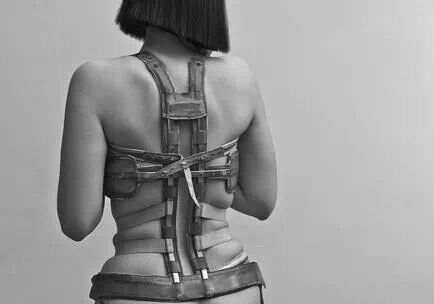
Today, I’d like to talk a bit about a new concern in modern posture care. There are basically 3 popular archetypes in modern posture care. They are:-
Type 1 – The Ambitious Perfectionist
Occasionally, some therapy students complain about back pain and could not understand why as they are generally really serious about keeping right postures and exercise regularly.
Trying to force yourself to earnestly sit or stand up straight is so ineffective and pointless that I wouldn’t even apply it to my slouching child. This is what most people would do.
When most people decide that they really need to “maintain right posture,” they usually don’t have any clear idea what they intend to do except to raise their chest up really high all the time through episodes of repeated self-nagging. However, keeping the chest really high also affects the breathing and causes what we call “shallow breathing”, in addition to the mental strain that people develop over the years.
Our posture, good or bad, is the product of spinal reflexes, all of which occurs, as it must, without the involvement of conscious concentration. While you can always exert self-nagging control to stay upright, you will always revert to the unconscious pattern the second your attention wanders and you repeatedly feel guilty over and over again.
Even if your self-nagging effort could sustain an upright posture, it tends to produce rigid, artificial posture waiting to disintegrate any moment.
Type 2 – The Ergonomic Freak
There have been many times when some of my corporate clients would, with frowning look at me from the corner of the eye, ask: “is your method something like ‘ergonomics'”?
The answer is a straight NO. Ergonomics is the science of arranging or designing your work station to suit the height and width of your body.
Unless you picked up your table and desk from the children’s section, your tables and chairs are not the root cause of your pain. The biggest misconception about ergonomics is that it’s about facilitating good posture. It could enhance your preference stress and strain.
Ergonomics has made slouchers out of a lot of people.
Conventional ergonomics, when arranging things to suit your body, tends to exclude the most important thing in your workstation-you and your poor spine!
If you have a rounded upper back and can’t keep to the height of the table, you should change the shape of your upper back, not lower the height of the computer, because after a few years, you would need to adjust it even lower.
Type 3 – The “Don’t have to think” Braces Approach
A popular sight you see in offices and around town recently is people putting on posture braces on their shoulders and lower back so that they can counter the guilt of “forgetting to chest up”. Imagine putting all these braces around your pets, they must have a real big problem, don’t they?
It’s not normal to depend on external forces to hold you upright. At the very best, these equipment just make your posture look right. This is obvious from a simple observation: there are a lot of people with good posture who are in terrible pain.
Looking “right” doesn’t mean right because it’s not coming from the original shape of the spine that held people upright naturally.
Sadly, due to ignorance, some practices can make a healthy back stiff and make a bad back worse. As you can see, if you still have pain despite your best efforts to correct your posture, you might want to rethink your techniques or restructure your practice.
No Comments